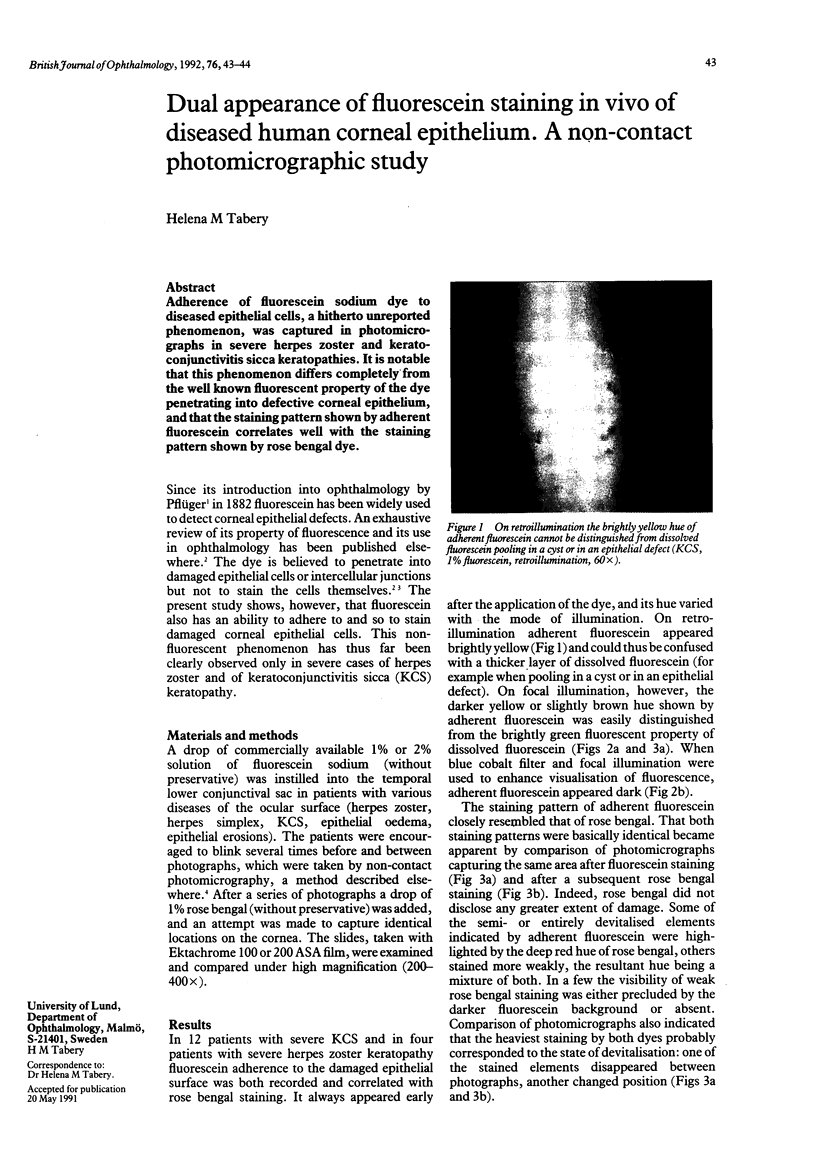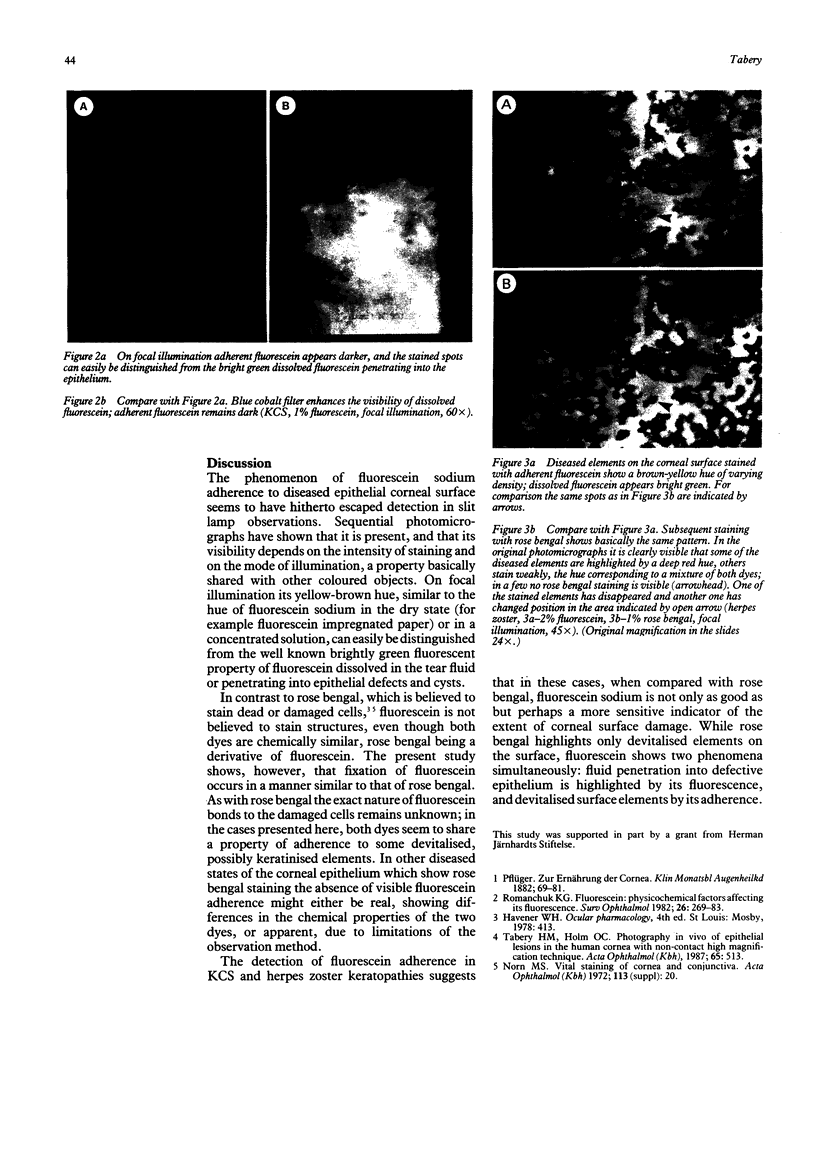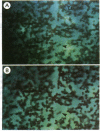Abstract
Adherence of fluorescein sodium dye to diseased epithelial cells, a hitherto unreported phenomenon, was captured in photomicrographs in severe herpes zoster and keratoconjunctivitis sicca keratopathies. It is notable that this phenomenon differs completely from the well known fluorescent property of the dye penetrating into defective corneal epithelium, and that the staining pattern shown by adherent fluorescein correlates well with the staining pattern shown by rose bengal dye.
Full text
PDF

Images in this article
Selected References
These references are in PubMed. This may not be the complete list of references from this article.
- Romanchuk K. G. Fluorescein. Physiochemical factors affecting its fluorescence. Surv Ophthalmol. 1982 Mar-Apr;26(5):269–283. doi: 10.1016/0039-6257(82)90163-1. [DOI] [PubMed] [Google Scholar]
- Tabery H. M., Holm O. C. Photography in vivo of epithelial lesions in the human cornea with non-contact high magnification technique. Acta Ophthalmol (Copenh) 1987 Oct;65(5):513–515. doi: 10.1111/j.1755-3768.1987.tb07033.x. [DOI] [PubMed] [Google Scholar]





